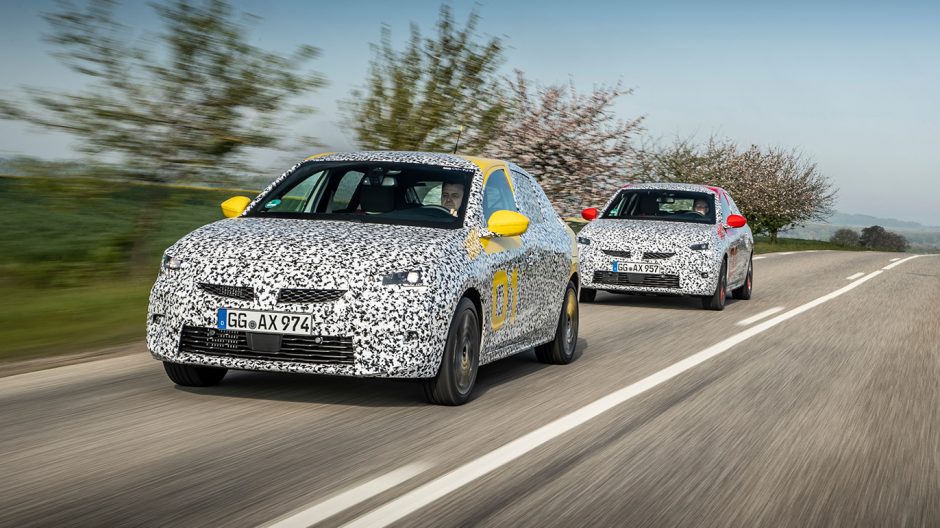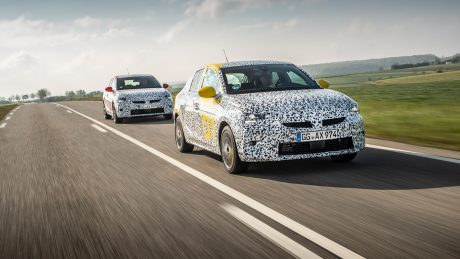- Schon bald serienreif: Die sechste Generation des Opel Corsa feiert im September auf der IAA in Frankfurt Weltpremiere.
“We wanted to prove that the new Corsa offers pure driving pleasure above all.”
Thomas Wanke
Automotive companies tend to want to draw as little attention as possible to their prototypes – especially when multistage test drives for pre-series vehicles on public roads, also known as validation drives, are on the horizon. In contrast, development engineers at Opel take the brand value of “being approachable” rather literally, and didn’t just invite journalists to the test drive for the sixth generation of the Corsa, but also let them get in the driving seat – of the prototypes, no less.
“We wanted to prove that the new Corsa offers pure driving pleasure above all,” says Thomas Wanke, Lead Development Engineer of the car’s sixth generation. And nothing comes closer to achieving this than a test drive. The test track was made up of the winding roads of the Südwestpfalz district on both sides of the Franco-German border.
![]()

Mastermind: Thomas Wanke is responsible for all aspects of the newcomer’s performance and coordinates an interdisciplinary team as Lead Development Engineer.
![]()
“We don’t just want to test the new Corsa in the icebox of Arjeplog, or at the test center in Dudenhofen, but also where the compact car will have to prove itself in the future – in real life.” “Real life” naturally includes the public roads. Thus, about 100 media representatives in total from all over Europe spent ten days putting the models to the test.
“The car’s driving dynamics and automatic transmission garnered a lot of praise in particular.”
Thomas Wanke
The media representatives’ positive response proved that the developers had struck gold: auto-motor-und-sport.de summarized its impressions of the new Opel with the sentence “Back and better than ever.” “The Corsa prototypes already impress with a mature performance – they’re a pleasure to drive, but also feel like they have already come of age.”
For the market launch, Corsa buyers will be able to choose between three gasoline-powered models (75, 100, or 130 hp) and one diesel engine (100 hp) – the 130 hp engine proved to be the tester’s favorite. He claimed that the engine is “an absolute luxury in this kind of compact car, especially in combination with the meticulously tuned eight-speed automatic transmission.” At the same time, the editor of “Auto Bild” came to the following conclusion: “The Corsa is a blast!” He continued, “The small Opel isn’t just some French model with a lightning bolt on the logo – it’s a Rüsselsheim vehicle through and through.”
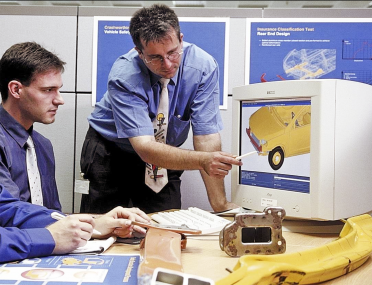
From the archive: Thomas Wanke already played a role in the development of the Corsa C back in the 1990s.
RÉSUMÉ
Thomas Wanke has been working at Opel since 1995. The new Corsa is the fourth generation of the best-selling model that the graduated engineer has been involved in developing. Among others, he worked on the Corsa C and a facelift of the Corsa D before taking on the role of Global Lead Development Engineer for the first time for the Corsa E. In this role, Wanke is also responsible for all aspects of the sixth generation of the Corsa’s performance, and coordinates an interdisciplinary team that develops its aerodynamics, acoustics, driving comfort, weight, handling, consumption, climate control system, and vehicle safety, among other things.
![]()
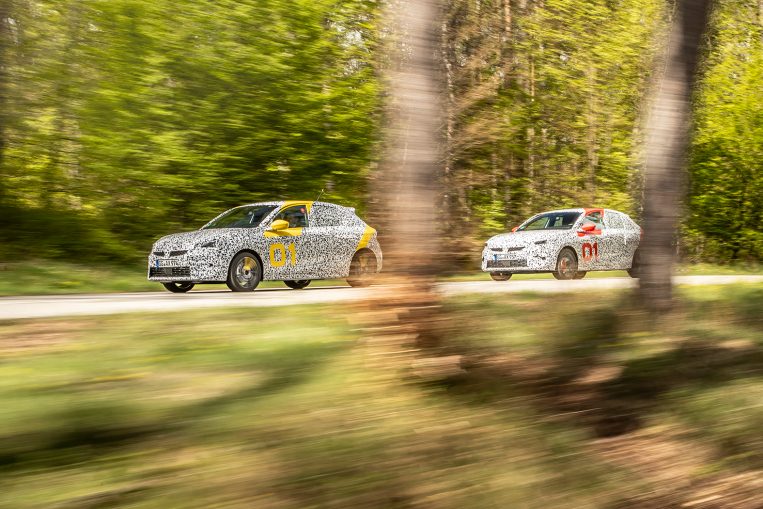
Two different Corsa models were involved in the tests: one with a 1.2-liter turbocharged gas engine, 130 HP and an eight-speed automatic transmission in yellow racing decals, and one with a 1.2-liter turbo engine, 100 HP, and a six-speed manual transmission in red.
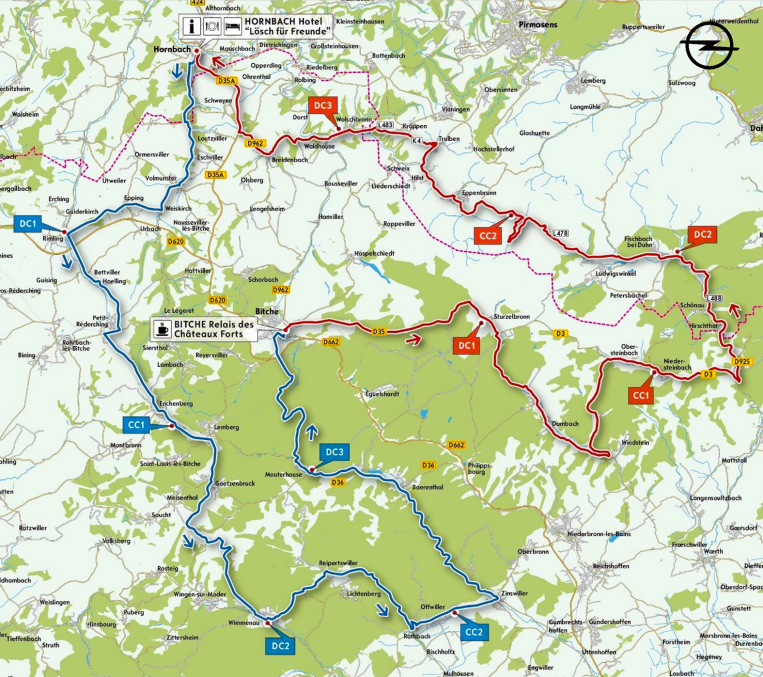
Quite the challenge: The roughly 180 km test track runs from the Südwestpfalz district in Germany into the French region of Lorraine.
![]()
The positive response isn’t the only reason why Wanke considers the event to be a resounding success. “The car has been very well received – its driving dynamics and automatic transmission garnered a lot of praise in particular,” says the Opel engineer of many years. Its incredible driving pleasure can, among other things, be traced back to the H-point of the seat, which is positioned 28 millimetres lower than the previous model. As Wanke explains, “The driver sits closer to the vehicle’s center of gravity. This means that they almost feel like a part of the vehicle, and are better able to control its lateral and longitudinal acceleration with the best possible body control.”

The five-door model’s performance on the road was proven in reality on both sides of the Franco-German border, where two Corsa convoys covered about 180 kilometres each day. Thomas Wanke and Michael Döring, Lead Development Engineer Vehicle Dynamics, were in charge of determining the route and pace in a Corsa GSi. Two disguised pre-series models and a vehicle from the current Corsa generation followed. This gave participants the opportunity to test two models of the new Corsa – a 1.2-liter turbocharged gas engine with 130 hp and eight-speed automatic transmission, as well as a 1.2-liter turbo engine with 100 hp and six-speed manual transmission.
![]()
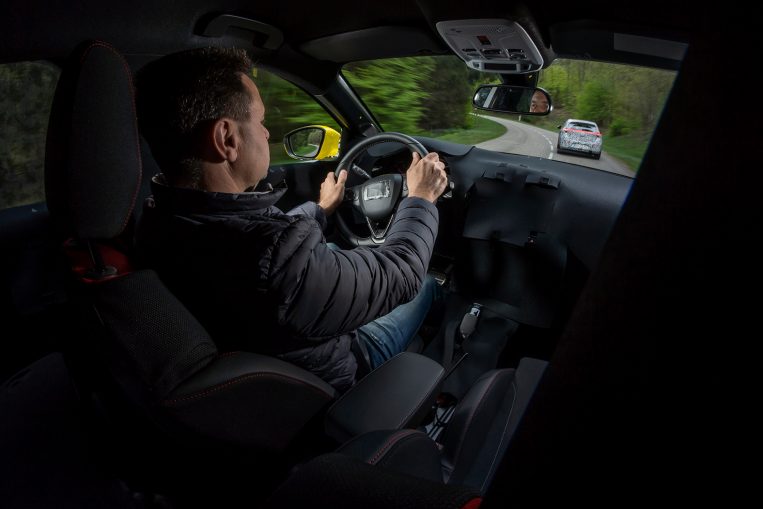
Winding, often narrow, with different road surfaces and rough patches: The test route offered the ideal conditions for letting the Corsa’s very high potential in terms of its comfort, dynamics, and steering shine through.
![]()

All new Corsa models have lower CO2 emissions than the most economical models of its predecessor. The paneling underneath the engine and on the undercarriage, plus a type of blind on the grille called the “Active Aero Shutter,” have made this possible.
“Even when we drove faster, we were only just about able to shake off the pre-series vehicles with the GSi. This is where the new Corsa’s weight, which is up to 108 kilograms less, becomes apparent,” explains Wanke.
The compact car uses the latest CMP architecture from Groupe PSA. “This, along with the lightweight construction methods and technologies used, was decisive in reducing the weight and giving rise to a higher chassis stiffness,” says Wanke. “The powerful and appealing engine and new automatic transmission play a significant part in the improved driving dynamics,” says Wanke. “The AT-8 shifts very precisely and quickly. This was also reflected in the participants’ feedback. It offers four different driving modes and a gliding function for idling in eco mode.”
![]()
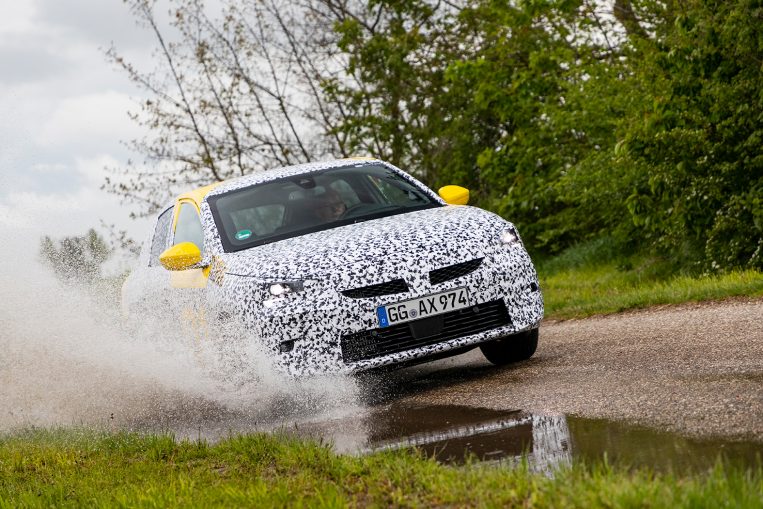
Balanced between safety, comfort and fun: The next Corsa generation is based on a completely new lightweight engineering, which means a perfect starting point for an increasing efficiency.
![]()
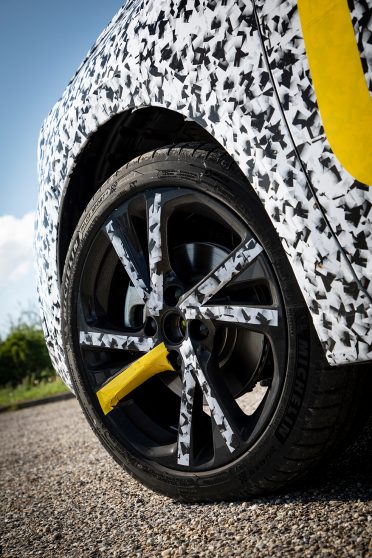
Wrapped: The Corsa with a 1.2-liter turbocharged gas engine, 130 hp and eight-speed automatic transmission has received an individual camouflage for the validation drives.
In order to extensively test both Corsa models and compare them with the reference vehicle, the participants changed cockpits several times on the track. As Wanke says, “the journalists were able to test two new models and draw direct comparisons with the current generation of the Corsa.”
“The test route offered perfect conditions for allowing the Corsa’s very high potential in terms of comfort, dynamics, and steering to shine through.“
Thomas Wanke
The test route in the sparsely populated border region also offered the perfect testing conditions, as Wanke goes on to explain: “The stretches of road here are winding and narrow, and the asphalt is very rough in parts. These were the ideal conditions for allowing the Corsa’s very high potential in terms of comfort, dynamics, and steering to shine through.” This sometimes even went beyond the boundaries – but only geographically between Germany and France.
![]()
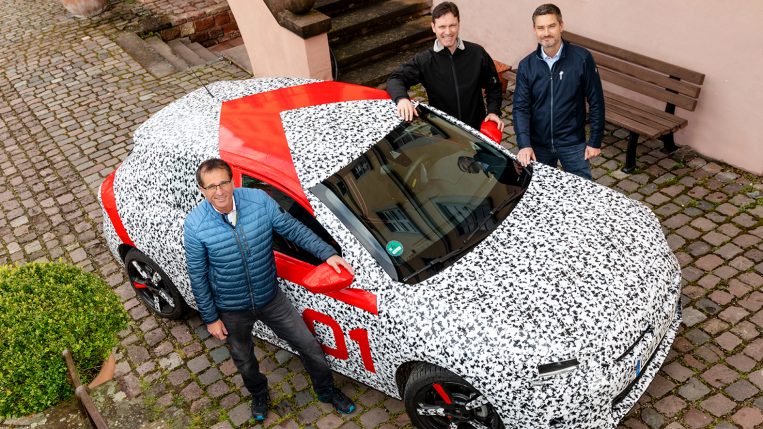
Three, who have played a key role in the new Corsa’s development (from left): Thomas Wanke (Global Lead Development Engineer), José-Luis Perez-Freije (Program Engineering Manager) and Michael Döring (Lead Engineer Vehicle Dynamics).
May 2019
